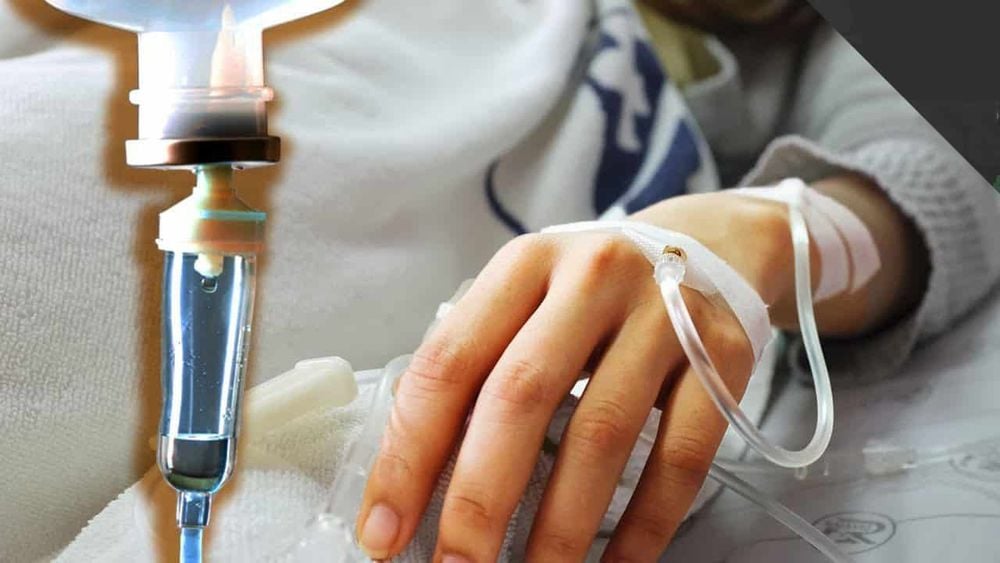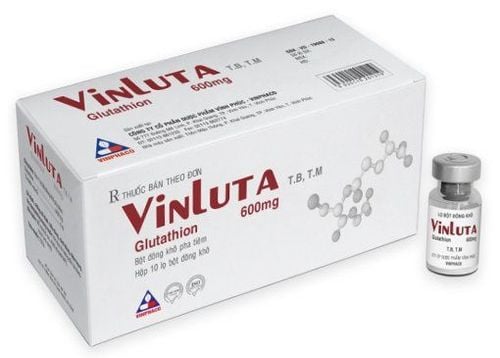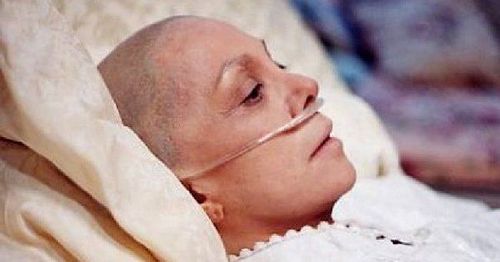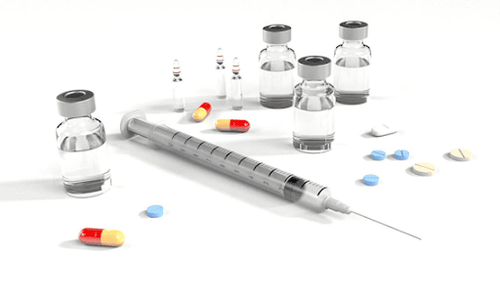This is an automatically translated article.
Tumor lysis syndrome is a cancer treatment emergency, often seen in the early stages of cancer treatment. It is caused by the massive lysis of cancer cells released into the blood, thereby causing a variety of metabolic disorders.1. What is tumor lysis syndrome?
Tumor lysis syndrome is defined as a group of metabolic disorders secondary to tumor destruction and release of intracellular products into the circulation.
Tumor lysis syndrome is a serious complication that can occur in the early stages when cancer treatment is relatively uncommon. If not detected and treated, it can lead to irreversible organ damage or even death.
Tumor lysis syndrome can occur during treatment for any type of cancer, but is most common in patients with non-Hodgkin lymphoma or acute leukemia. Usually occurs after starting cancer therapy, within the first 1 to 3 days of treatment. Some patients may have these metabolic changes even before starting treatment due to the rapid metabolism of cancer cells.
Some people have risk factors that increase their risk of developing tumor lysis syndrome. Risk factors for tumor lysis syndrome include:
A rapidly growing cancer condition. Cancer responds quickly to chemotherapy, which destroys the number of cancer cells. Large tumor. Cancer is in an advanced stage. High uric acid, phosphate levels, high white blood cell count before treatment Renal function decline. Low pH urine. Low blood pressure condition.

Hội chứng ly giải u là một biến chứng nghiêm trọng có thể xảy ra trong giai đoạn đầu khi điều trị ung thư
2. Features of tumor lysis syndrome
Characteristic of tumor lysis syndrome is when cancer cells die and break off, causing the release of substances into the bloodstream. These substances include potassium, phosphorus and nucleic acids. When high levels of these substances in the blood cause metabolic changes that lead to lactic acidosis, high phosphorus levels cause a decrease in blood calcium, and an increased concentration of acid in the urine can promote the formation of lactic acidosis. uric acid in the urinary tract and subsequently kidney failure.
A variety of disorders characterize tumor lysis syndrome that can damage organs such as the heart, kidneys, liver, and others. If this condition is not detected and treated early, it can lead to irreversible organ damage or sudden death.
3. Diagnosis of tumor lysis syndrome
Diagnosis of tumor lysis syndrome is usually based on clinical and laboratory findings.
3.1 Clinical signs Symptoms of the syndrome causing clinical symptoms associated with tumor lysis syndrome may include:
Gastrointestinal disturbances : Nausea, vomiting and diarrhea, loss of appetite mouth. Seizures due to hypocalcemia are easily excitable. Seizures occur. Changes in heart rate due to hyperkalemia lead to decreased heart rate or, in severe cases, sudden death. Muscle cramps or spasms, possibly tetany. Weakness or fainting or lethargy difficult to wake. Abdominal or back pain due to urinary tract obstruction. Oliguria or anuria, hematuria may be indicative of renal failure. Manifestations of fluid retention, facial swelling or edema. Many of these clinical symptoms may also be side effects of chemotherapy or may also be due to other causes. Therefore, the monitoring of clinical signs is sometimes difficult to detect and needs to be combined with subclinical signs.

Người bệnh thường có biểu hiện ăn không ngon, buồn nôn
3.2 Subclinical signs
Subclinical signs of tumor lysis syndrome: Based on the characteristics of tumor lysis syndrome, the corresponding subclinical signs will appear.
Serum uric acid ≥ 8mg/dL (476 Mmol/L) or an increase of 25% above the normal limit. Serum potassium ≥ 6.0 mmol/L or increased by 25% above the normal limit. Blood phosphate ≥ 6.5 mg/dL (2.1 mmol/L) for children and ≥4.5 mg/dL (1.45 Mmol/L) for adults or a 25% increase above the upper limit of normal for both age groups . Blood calcium ≤7mg/dL (1.75mmol/L) or 25% lower than normal limit. Increase in blood creatinine, greater than or equal to 1.5 times the lower limit of normal. In patients with high risk factors, especially children, it is necessary to monitor clinical signs and laboratory tests to detect tumor lysis syndrome early.
Tumor lysis syndrome is characterized by the release of substances into the bloodstream causing a variety of secondary disorders affecting the patient. Although not common, this syndrome is dangerous and is an emergency in cancer treatment, especially cancer in the early stages. If not detected and treated early, it can affect the patient's life.
Currently, Vinmec International General Hospital has achieved many achievements in examining and treating cancer problems at different stages. The treatment process is always carried out by a team of experts, qualified doctors combined with modern equipment and machines, helping the treatment to achieve high results and shorten the hospital stay. All medical examination, consultation and treatment services at the hospital are always comprehensive and professional to bring peace of mind and comfort to customers.
Please dial HOTLINE for more information or register for an appointment HERE. Download MyVinmec app to make appointments faster and to manage your bookings easily.













